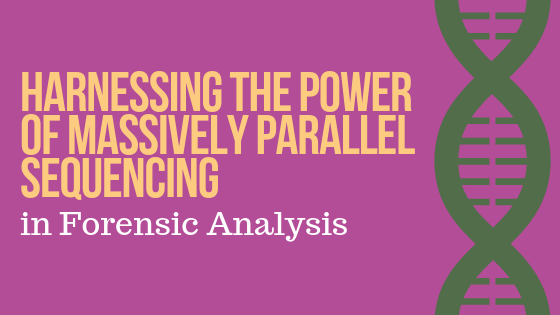The rapid advancement of next-generation sequencing technology, also known as massively parallel sequencing (MPS), has revolutionized many areas of applied research. One such area, the analysis of mitochondrial DNA (mtDNA) in forensic applications, has traditionally used another method—Sanger sequencing followed by capillary electrophoresis (CE).
Although MPS can provide a wealth of information, its initial adoption in forensic workflows continues to be slow. However, the barriers to adoption of the technology have been lowered in recent years, as exemplified by the number of abstracts discussing the use of MPS presented at the 29th International Symposium for Human Identification (ISHI 29), held in September 2018. Compared to Sanger sequencing, MPS can provide more data on minute variations in the human genome, particularly for the analysis of mtDNA and single-nucleotide polymorphisms (SNPs). It is especially powerful for analyzing mixture samples or those where the DNA is highly degraded, such as in human remains.
Written by: Ken Doyle, Promega
Despite these advantages, widespread adoption of MPS in forensic analysis still faces some challenges. Laboratories must adapt to a completely different technology, which requires specialized training, and methods must be validated for casework. Software analysis of MPS data can be complex, compared to the relatively straightforward results (electropherograms) obtained from CE analysis. Additionally, the cost per sample is still higher for MPS than for CE. Finally, library preparation for MPS can be time-consuming and involve multiple enzymatic treatment and purification steps. These steps are not needed in a standard CE workflow.
To simplify the standard MPS workflow, Promega developed the PowerSeq™ CRM Nested System, Custom (Cat.# AX5810). This system generates 10 small amplicons covering the control region or “D loop” in the human mitochondrial genome. The system uses a single, multiplex amplification reaction to produce a sequencing-ready library by using nested primer sets containing Illumina® adapter sequences. The inner primer anneals to the mtDNA template for amplification of the target sequence. The index primer anneals to the amplification product, adding the unique index during amplification. The amplicons range in size from 144 to 237 bp, and this small size makes the system ideal for analyzing degraded DNA samples. The resulting libraries can be sequenced on any Illumina® MiSeq® system or compatible instruments.

The nested amplification process incorporated into the PowerSeq™ CRM Nested System, Custom results in hands-on time savings of at least one hour for one sample and more than three hours for ninety-six samples. Elapsed-time savings range from three to almost five hours. Samples prepared with the nested workflow are ready for sequencing in one day, compared to a standard PowerSeq™ workflow in two days. Fewer sample manipulation steps are required, reducing the risk of introducing DNA contamination or mixing samples.
At ISHI 29, Seth Faith, PhD, presented the results of a study to optimize and validate the PowerSeq™ CRM Nested System, Custom, for forensic analysis. The research was conducted jointly by Faith’s group at Battelle (Columbus, Ohio) and the Ohio Bureau of Criminal Investigation. They extracted DNA from several sample types, including human bones, teeth, and buccal swabs, and used the PowerSeq™ CRM Nested System, Custom to amplify mtDNA forensic loci and prepare a sequencing library. After cleanup of the PCR amplicons, 24 indexed samples were pooled and sequenced on an Illumina® MiSeq® system using 2 x 300 bp paired-end reads. Bioinformatic analysis was performed using GeneMarker®HTS software (SoftGenetics, Pennsylvania). Libraries were also prepared from the provided 2800M Control DNA and Standard Reference Materials (SRM) 2392 DNA, a validated control for PCR-based forensic analysis of mtDNA. Control DNA samples were used at dilutions corresponding to 10–100,000 copies of mtDNA.
For the control samples, the sequencing data showed good coverage (100X) at a dilution corresponding to 10 copies of mtDNA. For bone samples, uniform coverage was obtained at different variant positions with input DNA at 100, 1,000 and 10,000 copies of mtDNA. Full control region haplotypes were obtained for DNA extracted from bone, teeth, buccal swabs, and the controls. The analysis also showed excellent concordance with Sanger sequencing data of the mtDNA control region.
In his presentation, Faith stressed the importance of using a mtDNA-specific quantitation method for accurate determination of the input DNA amount, as well as running duplicate PCRs to confirm variants against DNA damage in degraded samples. He also recommended using both negative and positive controls for mtDNA amplification and sequencing.
In conclusion, the PowerSeq™ CRM Nested System, Custom enabled efficient library preparation for highly sensitive variant analysis of human mtDNA by MPS. The system should enable forensic laboratories to develop more efficient and cost-effective workflows for mtDNA analysis, especially when working with degraded samples.
WOULD YOU LIKE TO SEE MORE ARTICLES LIKE THIS? SUBSCRIBE TO THE ISHI BLOG BELOW!
SUBSCRIBE NOW!


